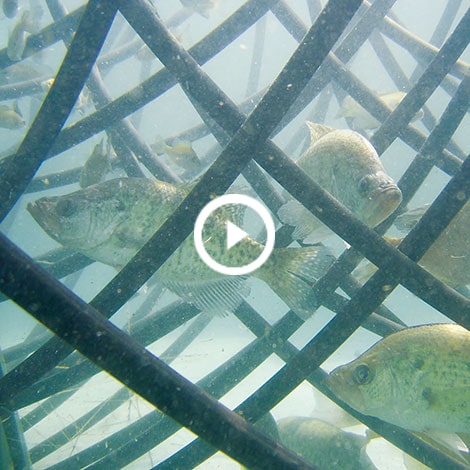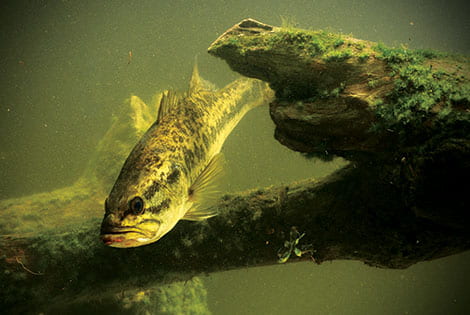Fish need to have a safe, relaxing place to go, whether it's to escape from predators or spawn peacefully. A good fish habitat or fish structure in shallow waters will provide baitfish with hiding places as well as areas for algae, plankton, and other food sources to grow. Adding fish habitat structures in deeper water nearby will provide hiding and hunting locations for your larger fish. Additionally, creating a fish habitat will also give you great places to throw your hook out and catch a few. There are two primary ways to develop fish habitat: artificial or natural.
Artificial Fish Habitats
Artificial fish habitats are the easiest and cleanest way to provide fish a safe home and are often more productive than natural habitats. Fish attractors will not decay or add to the muck at the bottom of the pond. Artificial fish habitats are designed to prevent hooks from snagging, giving your fish time to fall hook, line, and sinker for your bait. Typically, a good fish habitat for ponds will have 9 trees and 12 shrubs per acre. However, this may vary depending on the age of the pond and the type of fish.
Types of Artificial Fish Habitat
When designing an artificial fish habitat, there are a few types of fish structures and fish attractors to be aware of:
- Honey Hole Trees are great for depths of 6 feet or more and will cover an area 6' x 7'. The Honey Hole Tree provides up to 15,000 square inches of surface area for algae and eggs to attach in your fish habitat.
- Honey Hole Shrubs are designed for shallow water. The shrubs are 32" tall and 6' wide to cover a large area.
- Fish Attractor Spheres are easily assembled using 1/2", PVC Cement & Cleaner. Because you are cutting the PVC, you can make the spheres as large as you need.
- Spawning Discs are a great way to increase hatching rates by providing a stable, solid surface for fish to lay their eggs. The 20" diameter discs are concave to allow fish to lay eggs on the top or underneath, wherever they feel more comfortable.
Natural Fish Habitats
If you would prefer to create a more natural fish habitat in your pond, the best options are to use a combination of rocks, plants, trees, and logs.
Rocks
Boulders or cinder blocks are another good way to introduce a place for fish to hide and for algae to grow. Piles of boulders or concrete blocks can act as fish attractors for a variety of fish, as well as provide a medium for beneficial bacteria and tasty string algae to flourish. Use large boulders in your pond fish habitat (more than 2 feet in diameter) and place them away from the shoreline. Boulders can be useful if you have small streams or rivers leading to your lake or pond, too, as they can break fast-moving currents and provide a resting place for fish.
Plants
Plants are the most natural type of fish habitat for ponds. Plants not only provide shelter, block sunlight, and help prevent erosion, but they also act as filters to help reduce the nutrient load in the pond and add oxygen. There are many types of submerged, floating, and emergent plants that can be used for fish habitat, but make sure you stick with plants that are native to your area. Using native plants will help make it harder for invasive species to take over.
There are some disadvantages of using plants as fish structures in ponds. Make sure to keep the plants under control as they can spread quickly and take over a pond. Use plant bags or baskets to specify boundaries. As the seasons change, plants will die, decompose and add to the muck layer at the bottom of the pond. Ensure that you prune or manually remove dead plant material to keep up the fish habitat in your pond.
Trees & Logs
Logs and even whole trees can be used as a fish habitat for ponds. Logs and trees should be weighted so they will sink into the water. Just keep in mind that if you are using organic material for fish habitat in your pond, it will decompose and eventually turn into muck. Proactively remove any decomposing material to reduce muck.
Next Steps
Now you're ready to add fish structures to your own pond. Browse our selection of fish habitat solutions or contact our customer service team with any additional questions.
Last Updated: June 4, 2024

